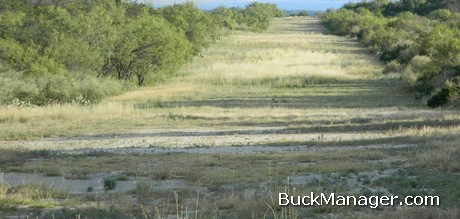White-tailed deer do quite well in a variety of areas. They’re always found in association with forests or woodlands of some type, but the plants that make up their habitat vary quite substantially across their range. While out searching for sheds this morning, I noticed a family group comprised of an old doe, a middle-aged doe that was probably one of her fawns from a few years back and a couple of last year’s fawns (now yearlings). They had a fair amount of plants at their disposal, but they were feeding at a point where the woodline butted up against grassland, an edge.
We all know that a huge component of deer management is creating, having and maintaining good habitat. Habitat is kind of a big idea. Although property owners and hunters that manage for deer want to have good habitat for the animals in an area, I’m not sure deer think about it the same way we do. Habitat is made up of a variety of plant communities, such as woodlands mixed with pastures or grasslands, riparian areas and maybe even agriculture fields and the such. No matter the types of plant communities, white-tailed deer are always attracted to the edges.

Deer Habitat Management for Transition Edges
Source: “The transition zone of vegetation between forests or woodlands and adjacent crop fields or grasslands, often referred to as an “edge,” can provide valuable habitat for white-tailed deer. These areas are often characterized by an abrupt change from forest to field. Edges can be improved by encouraging a gradual transition of plant types between the forest and field with a technique called edge feathering or by establishing a field border.
Thinning or cutting trees near the edge of a woodland tract or adjacent to logging roads or right of ways can also create transition zones between habitat types. Whitetail love these areas because they provide a diversity of high quality foods.
Trees more than 15 feet tall that are within 15 feet of the adjacent field can be cut or girdled. Treat all cut stumps, except eastern red cedar, with an approved herbicide to prolong the benefits of edge feathering. Always read and follow chemical labels for proper rates, usage and disposal.
Each of these edge feathering techniques can be used to promote the growth of soft mast-producing trees, shrubs and vines that white-tailed deer use for both food and cover.”
More Edge = More Deer?
It seems hunters inherently know that deer seek edges. We seek them too. The main difference is that deer are plant eaters searching for the most nutrient-rich foods they can find. We, on the other hand, are predators looking for those elusive plant eaters. Deer are attracted to edges because of the diversity of plants. Some plants found there provide more value in the Spring, some more in the Summer, Fall or Winter. Hunters, as well as other predators, are attracted to edges because that’s where we find deer.
By definition, the meeting of two different plant communities provides more potential food diversity than any single plant community. That’s why we should be creating and/or enhancing edges found on lands managed for white-tailed deer. That group of deer this morning was foraging on a variety of Spring forbs, which are extremely palatable and high in protein. Those forbs will be gone when it gets hot, but the deer will be back because other plants found along that edge will be of value in a short while.